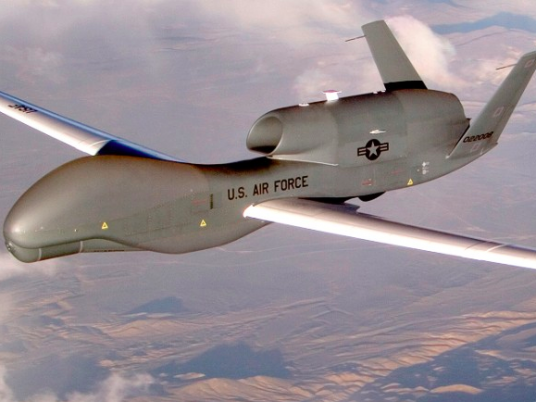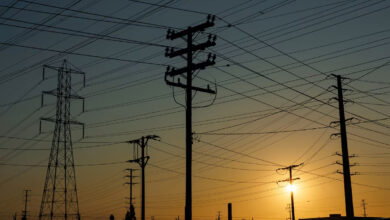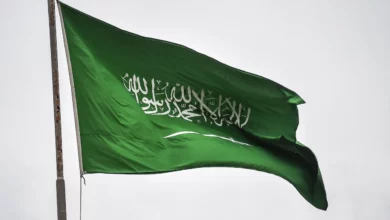
ATAQ, Yemen (AP) — The United States has waged a drone war in Yemen for 16 years, trying to suppress al-Qaida’s branch here. But the campaign has had a hidden cost: civilians cut down by the drones’ missiles.
There is no comprehensive count of civilian deaths because of the difficulty of confirming identities and allegiances of those killed. But in an examination of drone strikes this year alone, The Associated Press found that at least 30 of the dead likely did not belong to al-Qaida.
That is around a third of all those killed in drone strikes so far in 2018. The Pentagon does not release its assessment of the death toll, but an independent database considered one of the most credible in tracking violence in Yemen counted 88 people — militants and non-militants — killed by drones this year.
The AP count gives a glimpse, even if incomplete, into how often civilians are mistakenly hit by drone strikes, at a time when the Trump administration has dramatically ramped up the use of armed drones. It has carried out 176 strikes during its nearly two years in office, compared to the 154 strikes during the entire eight years of the Obama administration, according to a count by the AP and the Bureau of Investigative Journalism.
The AP based its count on interviews with witnesses, families, tribal leaders and activists. Most of those killed, 24, were civilians; at least 6 others were fighters in pro-government forces — meaning ostensibly on the same side as the US — who were hit in strikes away from the front lines while engaged in civilian life.
The drone toll goes almost unnoticed in the region’s conflicts. Immensely greater destruction has been wreaked by US allies in the Saudi-led coalition’s air campaign against Iranian-backed Shiite rebels known as Houthis. More than 57,000 civilians and combatants have been killed in Yemen’s civil war, by some estimates, and thousands more may have died of starvation caused by the conflict.
Yet the killing of a single man — Saudi journalist Jamal Khashoggi, slain by Saudi operatives in his own country’s consulate — has raised more international uproar than any of those deaths in a war waged by a coalition led by Saudi Arabia and baked by the US.
In comparison, the toll from US drones in Yemen runs in the hundreds, including both militants and civilians. Several databases are trying to track the deaths, with varying results. The Bureau for Investigative Journalism counted up to 1,020 killed by strikes from 2009 to 2016, under President Barack Obama, compared to up to 205 killed in 2017 and 2018. Another database, by the Armed Conflict Location & Event Data Project, counted 331 killed the past two years.
Counting civilians among those numbers is complicated by the difficulty in determining who belongs to al-Qaida in a country of multiple warring militias. Al-Qaida has joined the battle against the Houthis, and many of its fighters are incorporated into militias armed and funded by the US-backed coalition.
The campaign has scored some military successes. In 2015, US strikes took out Nasser al-Wahishi, the top leader of al-Qaida in the Arabian Peninsula, or AQAP as the Yemeni branch is known, and several senior lieutenants.
But drones have been most effective in forcing al-Qaida to limit its movements and hide in the mountains, avoid large gatherings and restrict cellphone use. The group withdrew from areas it controlled in the south but was allowed to keep weapons and money under secret deals it struck with the United Arab Emirates, a coalition member.
Over the years, the cost of the pursuit of senior leadership has been high.
For example, the US has killed at least 66 civilians, 31 of them children, in the unsuccessful hunt for one man, Qassim al-Rimi, one of AQAP’s founders who in 2015 succeeded al-Wahishi as the group’s chief.
Those deaths came in two raids reportedly targeting al-Rimi. The first was in 2009 in the southern village of al-Majalah. The second came on Jan 27, 2017, only days after Trump’s inauguration, in a US special forces assault on a village in Bayda province.
The civilian deaths come in a war conducted from a vast distance.
Drone pilots work remotely at American bases, most often in the US, sometimes on 11- to 14-hour shifts housed in rooms like shipping containers lined with electronics. They operate based on intelligence from informants but they also carry out so-called “signature strikes,” based on observing suspicious patterns of behavior. They have a list of characteristics, and if a subject on the ground shows a number of them, he could be targeted, a former participant to the drone program told the AP, speaking on condition of anonymity to discuss the operations.
Mistakes happen from bad intel or misjudging behavior, he said. Rights groups have expressed concern that some of the intelligence may come from prisoners held in jails run by Emirati-backed militias where torture is widespread.
Some of the strikes from 2018 that the AP examined appeared to be mistakes.
On Jan. 1, a drone missile slammed into a farm in Bayda province where 70-year-old Mohammed Mansar Abu Sarima sat with a younger relative, killing both, according to a relative, Mohammed Abu Sarima.
The slain men had just returned from mediating a local dispute. In a country where tribal links are powerful and the justice system nearly non-existent, such mediations are common to resolve conflicts over land or deaths. They involve large gatherings of tribesmen who are often armed, potentially raising drone operators’ suspicions.
“We don’t have any affiliation. They are simple farmers who don’t know how to read or write,” said the brother. “We live in fear. Drones don’t leave the sky.”
Several weeks later, a 14-year-old shepherd, Yahia al-Hassbi, was struck by a drone as he tended goats several kilometers (miles) from a checkpoint that al-Qaida had tried recently to seize. He was killed along with a construction worker passing by at the time, according to relatives and three local human rights workers, who spoke on condition of anonymity for fear of reprisals.
Further east, in Hadramawt province, drones carried out several consecutive days of strikes in March, targeting vehicles on a main highway. Some of the strikes killed al-Qaida militants, according to rights activists in the area.
But others struck down cars carrying people who had fled to the area from a nearby province, Jawf, to escape fighting. A drone’s missile on March 5 killed a 10-year-old boy, Ammer al-Mahshami, and wounded the driver, according to three relatives. Four days later, another car was hit, killing six men and boys, including a 14-year-old and an 18-year-old, travelling to a funeral.
Saleh al-Wahir, the brother of one of the dead, was in a car behind them. “I saw it before my eyes,” he said of the blast. “Bodies were ripped apart.” A report from the Jawf Human Rights office concluded the men were civilians.
Survivors are rare. Adel al-Mandhari recounted how his car was thrown through the air by the blast of a drone’s missile. He lost his legs and an arm and was burned all over his body. The four others in the car — his brother, uncle, cousin and another relative — were all killed. None were connected to al-Qaida, said al-Mandhari, a civil servant. Two other relatives and the three rights workers in Bayda confirmed his account.
Since the attack, al-Mandhari has spoken to the media and rights groups, seeking ways to get compensation and an apology from the US. “I lost hope,” he said. “Nothing is going to happen.”
Even some strikes that the AP did not include in its count may have killed civilians, though there is some dispute over them.
On May 14, two men, Hussein al-Dayani and Abdullah al-Karbi, were killed when a drone struck their pickup truck in an area of Shabwa province where al-Qaida is known to have a presence.
Al-Dayani’s brother, Khaled, denied they were militants. He said his brother was a fighter in a militia battling the Houthis. “We are against those people,” Khaled said of al-Qaida.
Two weeks later, a 17-year-old, Mahdar Hussein al-Hag, died in a strike while driving his motorcycle in the same area. Mahdar’s father said he was a high school student and was returning from buying vegetables. “He might have been mistaken for al-Qaida youth who are active in this area.”
A Yemeni security official said the dead in those strikes were all al-Qaida members, though he did not provide evidence. The official spoke on condition of anonymity because he was not authorized to talk to the press.




